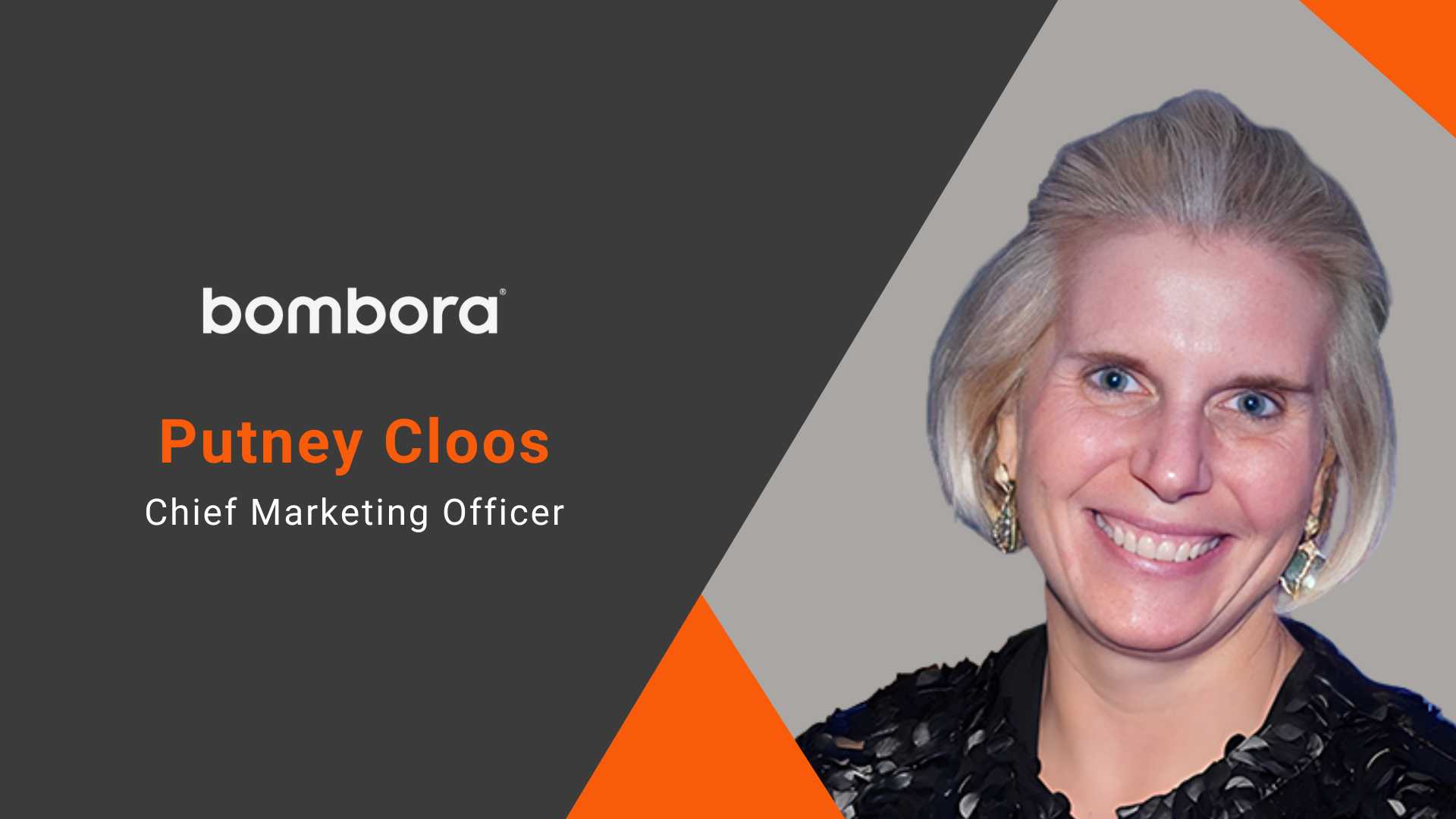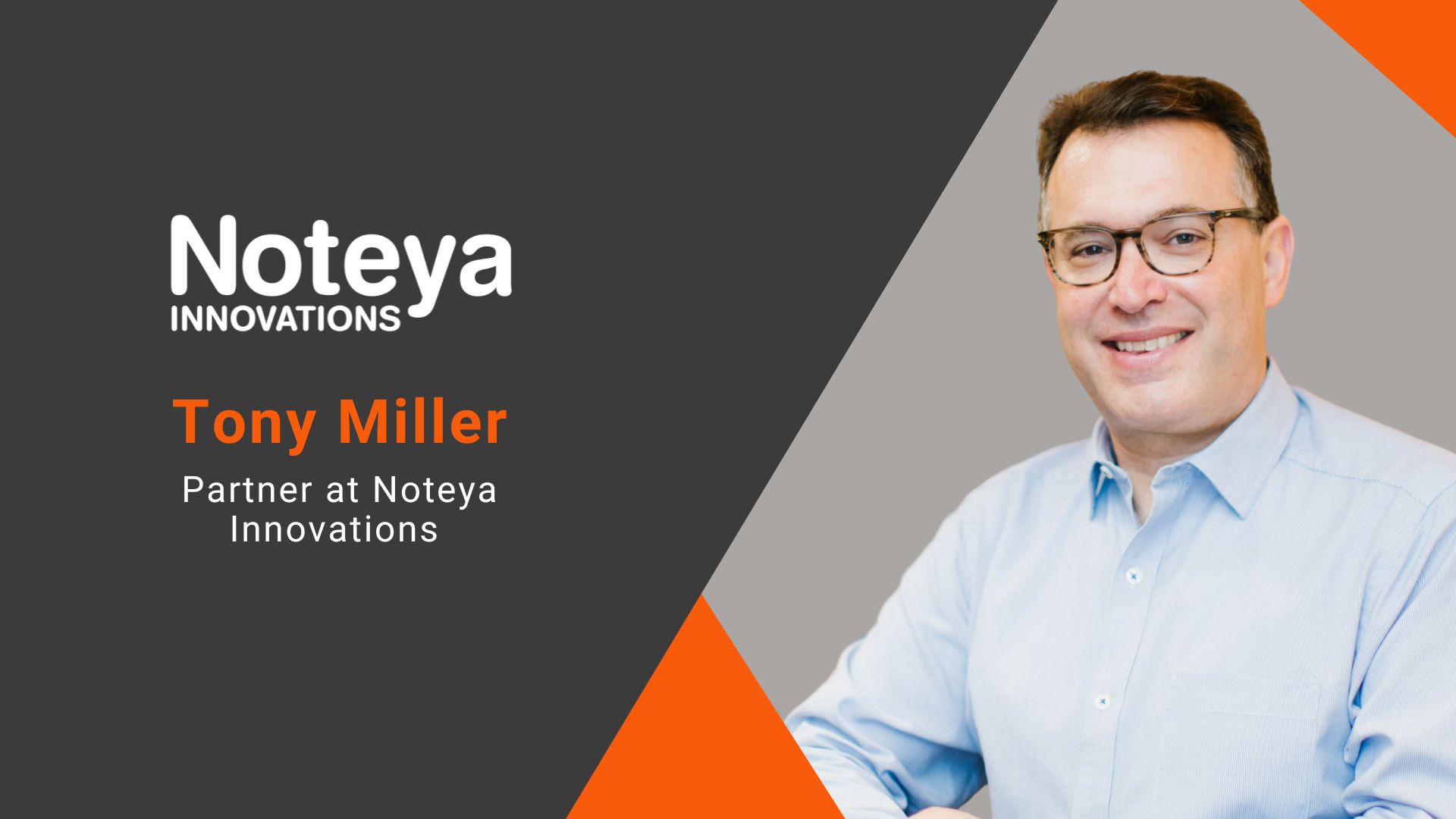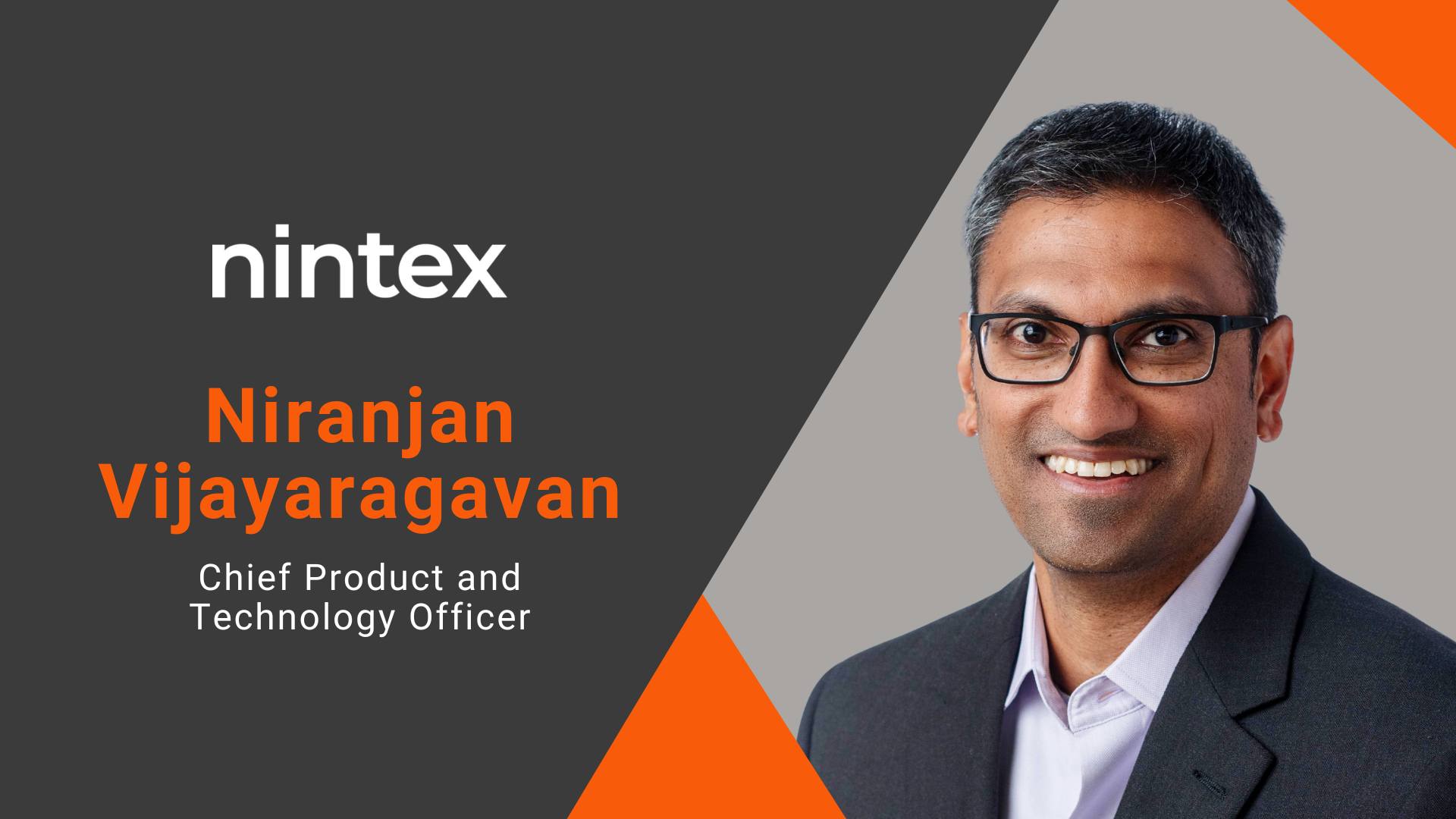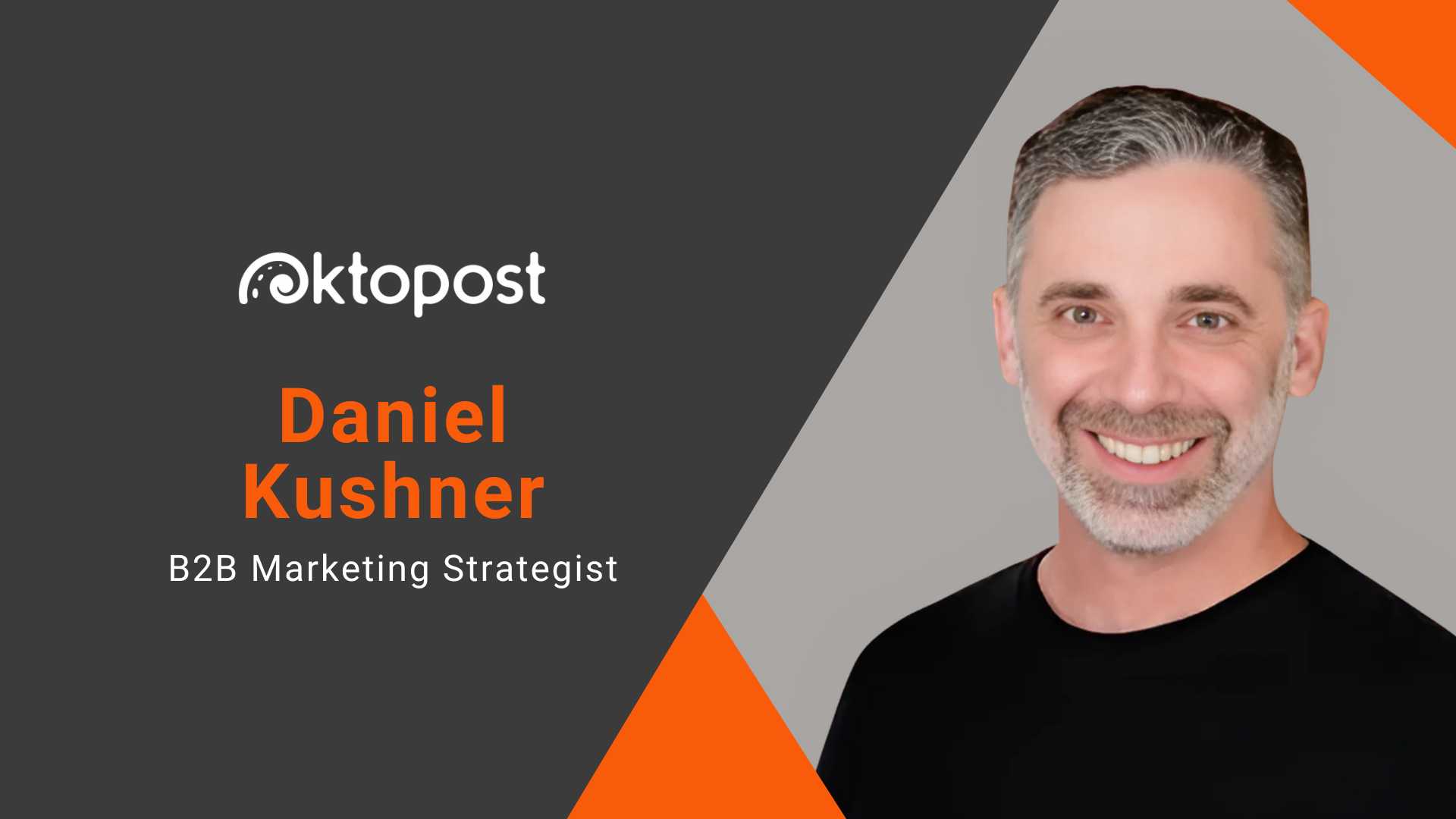
marketing
SurveyMonkey Expands to Costa Rica: Elias Conejo on Growth & Culture
marketing 4 Sep 2025
1. How do you evaluate the potential for Latin America as a growth market for SaaS and technology platforms?
Latin America presents a dynamic and rapidly evolving landscape for SaaS and tech. The region has a growing digital economy, a strong entrepreneurial spirit, and an increasing demand for user-friendly, scalable solutions that solve real business problems. At SurveyMonkey, we already serve over 19,000 paying customers in Latin America, which signals both trust in our platform and appetite for digital transformation. With local languages, cultural fluency, and on-the-ground support, we see incredible potential to grow our impact across the region.
2. How do you balance the need for local talent versus global talent mobility when expanding internationally?
We see global and local talent as complementary forces. Our goal is to build high-performing, culturally fluent teams that reflect the markets we serve. In Costa Rica, we’re tapping into a highly skilled local workforce across engineering, sales, marketing, customer success, operations, and more. At the same time, we foster global collaboration—sharing expertise, aligning on strategy, and creating growth pathways for talent across our offices. It’s not about choosing one over the other; it’s about building a networked organization where knowledge, innovation, and opportunity flow across borders.
3. How important are employee well-being initiatives (e.g., meditation rooms, pet-friendly zones) in your workplace culture strategy?
They’re central to our culture. We believe that a healthy, engaged team is a high-performing team. Our new office in Heredia reflects that with spaces and amenities designed to support both productivity and well-being, whether that’s a quiet space to recharge, a barista to brighten your morning, or simply being able to bring your pet to work. For us, these are more than perks. They’re expressions of our commitment to building a workplace where people can do their best work while feeling like they truly belong.
4. How do you leverage regional cultural values, like Costa Rica’s “Pura Vida,” to enhance team cohesion and company culture?
“Pura Vida” is more than a saying. It’s a mindset rooted in authenticity, optimism, and community. That spirit aligns closely with our own values of inclusion, balance, and human connection. As we build our team in Costa Rica, we’re intentionally creating a culture that honors both local identity and global belonging. This means embracing what makes each region unique while fostering a shared sense of purpose across all our offices. “Pura Vida” helps us stay grounded and connected as we grow.
5. With over 19,000 customers in Latin America, how do you tailor your product and marketing strategies to regional market needs?
Local relevance is key. Our platform is available in over 56 languages, including Spanish and Brazilian Portuguese, which helps make it accessible and intuitive to users across the region. Beyond language, we listen closely to our customers’ needs—through feedback, support channels, and usage data—and adapt our product experiences accordingly. From marketing campaigns to customer success programs, we’re focused on showing up in a way that’s thoughtful, culturally resonant, and value-driven.
6. What is your vision for the role of international offices in driving innovation and customer experience in a global SaaS company?
Our global offices are not just operational centers, they’re engines of innovation and insight. Local teams bring fresh perspectives, closer proximity to customers, and deep cultural understanding that shapes how we build and support our products. In Costa Rica, for example, our engineering and customer teams are helping us better serve users across the Americas, while contributing to global priorities. When we empower regional teams to lead, we strengthen our entire organization and create better experiences for every customer, everywhere.
Chris Rosica on Crisis Comms & PR for Resilient School Districts
marketing 3 Sep 2025
1. What are the most common communications mistakes districts make during reputational crises and how can they avoid them?
There are three primary things school districts can do to ensure better crisis communications outcomes. These include:
- Adopting an immediate response mindset, which entails being crisis prepared (i.e., assigning an internal crisis management team and developing a scenario-based crisis communications plan that reflects education’s ever-changing environment). It is also wise to utilize outside PR/crisis counsel for issues, which mitigates risk and de-escalates reputation-damaging circumstances.
- Ensuring legal counsel and PR/crisis counsel work seamlessly to protect your district. Legal crisis counsel does not focus on protecting your image/reputation but will, of course, protect your legal interests while PR firms are not experts on the laws that govern.
- Telling your good news proactively so when a crisis does occur, your reputation is intact. Storytelling and advocacy are indispensable in education today.
2. How do you tailor crisis communications for school districts, where stakeholders range from students and staff to media, unions, and community leaders?
This is an extremely informed question as tailoring messages for various stakeholders is critical – not only when dealing with issues, but also in proactive PR and communications. We develop a message matrix for each scenario with clear delineation for different stakeholders to ensure we are touching on things that are relevant to them. It’s a matter of identifying the pertinent communication points for each stakeholder group and emphasizing or leading with those, following up with facts and supporting messages.
3. What role does local SEO and online reputation management play in district competitiveness and how should districts get started?
Another smart question because historically districts have not utilized SEO and rarely focus on online reputation management (ORM). This is because, heretofore, public education has not experienced such intense competition. Public schools have to think more like businesses and SEO and ORM are examples of how they must plan and work differently. With school vouchers on the rise, our agency views SEO and proactive ORM as imperatives.
4. How can districts balance transparency with message control in today’s polarized and fast-moving media landscape?
We say, “Tell who needs to know what they need to know when they need to know it.” This means concise communications to key stakeholders with an emphasis on truthfulness and, when appropriate, contrition. It does not mean message overload and explaining every detail, ad nauseam.
We urge our clients never to be defensive, and to tell the entire story (i.e., their positive actions, when and where appropriate). They should always be advocating for themselves.
We’ve witnessed the best defense being a strong offense. We believe in this axiom because it is critical to regularly disseminate your good news, and make sure to consistently share it with your stakeholders so when something negative pops up, you’ve already created a solid foundation of positive storytelling.
The polarization issue is real and not going away anytime soon. Therefore, the words you use are of critical importance. Take the lead from a professional communicator, an agency or individual that understands these nuances.
5. What internal communication tools or strategies are most effective in multi-building, diverse districts?
We have found video to be the single most important communications tool for internal communications in multi-school districts. Via a monthly video shot on a high-quality smartphone (not overly produced), the superintendent can engender trust, build rapport, demonstrate transparency, bring levity, and rally the troops. Of course, if we did not live in an entertainment-based society, video would not be so important. But we do and it is.
6. In your view, what will define a “resilient” public school district over the next 5 years and how should they prepare?
Districts that: regularly refine their positioning and messaging; have a strong crisis communications plan in place; conduct consistent and proactive PR/storytelling and digital marketing (e.g., SEO); and build a strong advocacy network that encompasses not only the school community, but the greater community (policymakers, influencers, alumni, media, etc.).
Get in touch with our MarTech Experts.
Bombora CMO on Contextual Targeting & B2B Intent Data
marketing 3 Sep 2025
1. In what ways do you see contextual targeting evolving your digital advertising strategy, particularly for complex or niche B2B industries?
We believe contextual advertising is a big opportunity for ourselves and also the brands and agencies that we serve with our Digital Audiences. Often, contextual advertising is thought of as a strong ‘plan B’ to hedge against changes in privacy regulations or the deprecation of 3rd party cookies, or as a programmatic ‘safe haven’ to protect against brand safety issues. We think this massively under sells the contextual opportunity. Contextual advertising, especially now given AI’s sophisticated ability to understand nuanced content across all mediums (digital print, CTV, digital audio), is an opportunity to achieve more relevant ad placement and channel integrations. More relevant placements are a foundation for better audience experiences which lead to higher engagement rates and elevated behavioral outcomes. Today’s contextual advertising takes the old adage of ‘meet your audience where they are’ to a whole new level.
2. What steps is your team taking to ensure that your ad campaigns are not only reaching the right audience, but also aligning with moments of high purchase intent?
We use our own Company SurgeⓇ Intent data to ensure that we are reaching our target audience at the right moments across the buyer journey. Our Intent data, derived from our one-of-a-kind B2B Data Cooperative, is an incredible asset because it gives us predictive insight into a huge set of “right moments”: when a prospect account is in early research phases, comparing specific solutions, and ready to make a purchase decision. We also have insights into customer behavior occurring on and (more importantly) off our digital properties. These differentiated insights allow us to customize our messaging and tactics to meet the account where they are. We also apply our Intent data to fuel strategies to mitigate our own customer churn and take advantage of opportunities with companies using alternative, “non-Bombora” data solutions. For example, right now we are running a “competitive take-out” campaign fueled by insights from our Data Cooperative.
3. What challenges have you encountered in transforming raw intent signals into actionable, revenue-driving campaigns across digital platforms?
When I look across the B2B ecosystem I see a multitude of high potential signals that could empower marketers to create highly relevant experiences that would benefit their target audience. The challenge is that these signal “owners” do not have the ability to turn them into addressable account-based audiences. Audiences that can be reached in an efficient and repeatable way through digital marketing channels.
4. How do you approach vendor selection when considering solutions that combine data intelligence with programmatic precision?
Here at Bombora, we live by the advice we give our customers and partners: bear in mind “not all B2B data solutions are created equal”. To this end:
i. It is extremely important to understand the source, scale and durability of any data you are using to drive your business. It is risky to build strategies on data from unconsented sources, from black box models without transparency, or that may be locked into specific platforms limiting your ability to create unified prospect and customer experiences.
ii. Prioritize solutions that allow you to activate unified audience experiences across platforms, aligned to the true buyer journey. We all know that the B2B buyer journey is a nonlinear experience with a multitude of touchpoints across tactics. Knowing is one thing, delivering against this is another.
5. With over 500 unique audience segments now available, how do you prioritize which segments to target in your industry-specific campaigns?
I believe that audience configuration should be defined by the campaign objective. To me, the campaign objective is a dual focus on the who (the messaging target which in B2B is typically a “buying group” or set of influential stakeholders) and the what (the intended shift in behavior within this group (e.g., enhancing awareness or encouraging evaluation). These two elements allow us to precisely select the best account segments (account lists with attribute, behavioral, or signal overlays) and the most effective mix of channels and creative formats for delivering the message which ultimately dictates the necessary mix of addressable identifiers. Of course, realistically scale and efficiency is an important consideration but these need to be secondary to the campaign objective.
6. As B2B buyers engage more digitally, how is your organization ensuring that marketing efforts are tailored to individual buyer behavior and contextual relevance across channels?
Tailored marketing is only as good as the granularity and accuracy of the insights that fuel it. We are rolling out solution enhancements that will empower marketers to be more tailored. Three different examples bring this to life:
i. We are rolling out B2B persona level enhancements to Company SurgeⓇ Intent data which give marketers predictive insight into the functions, seniority levels and geographic location of members of an account’s buying group. We also offer buying stage analytics which allow marketers to map accounts to their position in the buyer journey and customize content, messaging and tactics to meet these accounts where they are.
ii. Our Visitor Insights identity and enrichment tool allows marketers to identify anonymous website visitors providing not just the account/ domain identity but also insights into the content that this visitor has been researching most recently. In real time our solution empowers marketers to customize the content of their site or retargeting campaigns based on these insights.
iii. In April we announced a new partnership with Simpli.fi. Through this integration, Bombora data is powering 76 contextual topic clusters (including topics like Machine Learning and Artificial Intelligence and Marketing Technology) that B2B advertisers can use for targeting to ensure that their digital ads and content experiences are placed in as relevant destinations as possible. This groundbreaking solution was recently recognized with Just Global’s Dick Reed Award for Channel Advancements & Innovations.
Why Modern Brands Need a Systems-First Approach
digital marketing 5 Aug 2025
1. You have redefined yourself around a “systems-first” model. What prompted this shift, and how does it reflect the needs of modern businesses?
- Strategy sets the purpose and market direction.
- Branding expresses that vision in a way people can connect with.
- Technology builds the infrastructure to support and scale that experience.
- Growth ensures it reaches the right audience with measurable results.
- OKRs (Objectives & Key Results)
- Customer Journey Architecture
- North Star Narrative Alignment
How Storm Reply Built a Scalable GenAI Content Platform on AWS
content marketing 21 Jul 2025
1) What were the key architectural decisions involved in building the AI-powered content personalization platform, and how did you address performance, latency, and scalability concerns?
As Storm Reply, as official AWS Premier Consulting Partner, our first architectural decision was to anchor the entire platform on Amazon Web Services (AWS). This strategic choice allowed us to take advantage of AWS’s robust AI/ML offerings and global infrastructure from day one. At the heart of the platform is Amazon Bedrock, which provides seamless access to multiple large language models (LLMs) from top providers like Anthropic and Meta. This not only gave us flexibility in model selection, but also ensured enterprise-grade reliability, availability, and speed.
To address performance, latency, and scalability:
- We utilized Amazon CloudFront for global edge caching, which significantly reduced latency,
- We benefited from Bedrock’s fully managed backend, which automatically scales based on workload without manual intervention,
- And we relied on AWS’s Tier 1 data centers and 99.99% SLA-backed availability to ensure high reliability across regions.
By designing a cloud-native architecture using AWS-native services, we were able to deliver a scalable, low-latency, and highly resilient platform with minimal operational overhead - aligned with both our technical vision and AWS best practices.
2) Can you walk us through how the solution integrates NLP and ML for content extraction and contextual adaptation across industries and formats?
The platform we built for Storybent leverages machine learning services provided by AWS through Amazon Bedrock, where access to multiple large language models - such as those from Anthropic, Meta, and others - is already built in. These models are wrapped in APIs that make it easy to plug into our workflow.
We use this setup to compare and fine-tune outputs across different LLMs, depending on the industry, content type, or language style required. By carefully crafting and adjusting prompts, we can generate highly specific, context-aware content that fits a variety of formats - from marketing copy to social media to technical descriptions.
This allows us to support a full end-to-end content pipeline: from the initial idea, through language understanding and generation, to producing tailored outputs optimized for both audience and channel.
3) What were the major implementation challenges faced when taking this AI-powered system from concept to production, and how were they overcome?
One of the key implementation challenges - common across many AI projects - was putting the right structure in place to trust the output of the system at scale. From an engineering perspective, the core components were in place, but the challenge was ensuring the generated content met the required standards across use cases.
To solve this, we implemented a human-in-the-loop workflow, where outputs were reviewed, approved, and continuously improved through expert feedback. This helped us validate results early on, fine-tune prompts, and build guardrails that ensured consistency and relevance across different industries and formats.
Over time, this approach evolved into a repeatable and scalable process. The models improved through iterative prompt design, and we established a feedback loop that allowed the system to gradually operate with more autonomy - without compromising quality or control.
4) What DevOps and MLOps frameworks have been integrated to ensure delivery, monitoring, and model updates in a production environment?
We chose Amazon Web Services (AWS) because of its strong support for both DevOps and MLOps at scale. From an MLOps perspective, the solution is built around Amazon Bedrock, which offers fully managed access to a variety of foundation models, as well as simplified deployment, monitoring, and billing transparency. This removes much of the operational overhead typically involved in managing generative AI workloads.
On the DevOps side, the platform is deployed using Amazon CloudFormation, enabling infrastructure as code and repeatable, automated deployments. We’ve integrated AWS Config, CloudWatch, and CloudTrail to support system configuration, performance monitoring, and auditing. These tools together power a CI/CD pipeline with DevSecOps practices, ensuring the platform remains secure, scalable, and easy to maintain.
We continue to prioritize native AWS services wherever fiscally feasible, in order to maintain tight integration, cost visibility, and long-term flexibility.
5) How do you foresee the role of GenAI evolving in enterprise content strategies, particularly in terms of personalization, real-time adaptation, and cross-channel orchestration?
GenAI is already becoming a foundational tool in enterprise content strategies, especially for personalization at scale and rapid content generation. But its real potential lies in how it integrates into automated workflows - where the goal is to go from a simple idea or brief to a complete set of outputs across multiple formats and channels.
Looking ahead, GenAI will play a central role in enabling real-time content adaptation, adjusting tone, format, and message dynamically based on audience, context, and platform. When combined with agents and orchestration tools, it will support cross-channel publishing - automatically generating tailored content for social media, email, print, and even video or audio.
In this context, GenAI isn’t just a content creation tool - it becomes part of a broader system that reduces time to market, lowers operational costs, and continuously optimizes content performance across touchpoints.
6) What innovations are you planning to add next to the platform—such as real-time audience segmentation, sentiment analysis, or multilingual support?
All of those capabilities - real-time audience segmentation, sentiment analysis, and multilingual support - are part of the roadmap. We’re working closely with Storybent to prioritize these features based on their business goals and rollout strategy.
That said, the area we’re most focused on next is building a system-level optimization strategy. Beyond adding features, the goal is to create a platform that’s constantly learning and improving - streamlining content delivery, reducing time to output, lowering overhead, and enhancing performance.
In a landscape where more companies are looking to insource AI capabilities, the ability to deliver continuous, automated optimization becomes a real differentiator. That’s where we see the greatest long-term value, and where we’re directing most of our innovation efforts.
Get in touch with our MarTech Experts.
How Floyi Scales Content With Topical Maps and AI-Powered Briefs
content marketing 11 Jul 2025
Inside PerformLine: How AI-Driven Compliance Is Evolving in the Age of Digital Marketing
digital marketing 7 Jul 2025
1. What measures are in place to help your clients identify and mitigate risks associated with Unfair, Deceptive, or Abusive Acts or Practices (UDAAP) in their marketing materials?
UDAAP compliance is complex. For marketing and compliance leaders, UDAAP is often difficult to identify and comply with because of its very broad definition and the many federal and state regulators that enforce it.
At PerformLine, we’ve been helping our clients monitor for potential UDAAP issues for almost 20 years. Our compliance rulebooks are curated libraries of terms and phrases used to automatically flag potential marketing violations across digital channels. Think of them as the engine behind automated compliance monitoring. (Read more about our rulebooks here.)
Unlike static checklists or generic keyword libraries, our UDAAP rulebooks are dynamic, comprehensive, and built with real-world use cases in mind. With over 1 billion observations across the PerformLine platform, we’ve witnessed how marketing compliance evolves as language, tactics, and channels shift. UDAAP, in particular, remains one of the most complex regulations to monitor—broadly defined and constantly changing.
Take a phrase like “guaranteed approval” or ”risk-free.” While they may seem like strong marketing language, they can also imply deceptive outcomes under UDAAP. Each rulebook includes thousands of precisely curated terms tied to deceptive marketing tactics, consumer complaint trends, and regulatory language so organizations can spot problematic language before it impacts their customers or their credibility.
2. What challenges and opportunities are there in integrating automated compliance solutions across different marketing platforms?
One of the primary challenges lies in the variability of the marketing platforms or channels to be monitored—each with its own data structures, APIs, and content formats—which makes standardization and integration complex. At PerformLine, we've built an unmatched technology to gather, organize, and deliver high-quality compliance data from diverse and challenging sources. Our extensive web crawling and discovery technology, deep integrations with social media platforms, and ability to collect consistent email data from hundreds of thousands of inboxes represent the critical groundwork that LLMs simply can't replicate or replace. Additionally, the fast-paced nature of digital marketing, especially with AI-driven or user-generated content, adds to the difficulty of real-time oversight. Compliance standards can vary, requiring automated tools to be highly adaptable and often customized for specific regulatory expectations.
Despite these challenges, the opportunities are substantial. PerformLine’s compliance automation enables brands to scale compliance monitoring across a myriad of channels, ensuring faster detection of potential violations and enabling real-time risk mitigation. It also promotes regulatory adherence across all marketing touchpoints, while generating actionable insights that help inform marketing and compliance strategies. Ultimately, PerformLine allows organizations to shift from manual and reactive compliance to a more proactive, efficient, and integrated approach that aligns with the complexity of the digital marketing ecosystem while allowing for compliant growth.
3. How do you evaluate the effectiveness of your current compliance rulebooks in detecting and preventing potential violations across various marketing channels?
We evaluate effectiveness through a combination of quantitative metrics and continuous refinement processes. Rulebooks are designed with specificity for the client’s industry, regulatory environment, and risk tolerance. Their performance is assessed based on detection accuracy, coverage across marketing channels, and reduction in false positives and false negatives. The platform continuously monitors flagged content across marketing channels to ensure that rules are identifying compliance risks. Feedback loops from client reviewers and internal audits are used to adjust and fine-tune rule logic, ensuring alignment with evolving regulations and marketing practices. Additionally, aggregated data from across the platform provides insights into rule performance trends, allowing for proactive adjustments that keep compliance programs both effective and adaptive.
4. What is PerformLine’s approach to monitoring marketing compliance across various channels, from initial material review to monitoring across the web, email, social media, and messaging platforms?
At PerformLine, our approach to marketing compliance centers on helping teams work more efficiently without sacrificing oversight. The platform delivers a unified, omni-channel solution that supports compliance from the moment content is created through live monitoring across web, email, social media, calls, and messaging. With Document Review, marketing materials are automatically ingested, reviewed, and scored before publication, reducing tedious back-and-forth delays between marketing and compliance. Once content is live, PerformLine continuously discovers and monitors assets using a combination of AI and rule-based tech to flag potential risks—like missing disclosures, misleading claims, or unapproved language—across both owned and third-party properties. All findings are centralized in a single dashboard, giving teams full visibility and actionable insights to resolve issues quickly. By replacing disconnected tools with a streamlined process, PerformLine makes compliance seamless, scalable, and consistent across every marketing channel.
5. How do you assess the effectiveness of your compliance oversight in maintaining brand integrity and consumer trust?
Our platform enables organizations to proactively identify and remediate non-compliant or off-brand content before it reaches consumers, helping to prevent reputational damage and regulatory exposure. We track key performance indicators such as the volume and severity of violations detected, time to remediation, and the rank of partner or agent compliance over time. Additionally, we work closely with clients to align compliance oversight with their brand standards, ensuring that every consumer touchpoint reflects accurate and transparent messaging. Through ongoing rule optimization, reporting, and feedback loops, we help organizations build a culture of compliance that reinforces their brand’s credibility and earns long-term consumer confidence.
6. How do you ensure that your compliance monitoring systems are updated regularly to reflect the latest regulatory changes and emerging marketing tactics?
We combine regulatory intelligence, client collaboration, and agile technology updates to make sure our clients' compliance programs stay up-to-date. Through tech and dedicated teams, our rulebooks track changes in regulatory guidance—from agencies like the FTC, SEC, state attorneys general, and others, as well as emerging enforcement trends and industry best practices. This intelligence is used to update our rulebooks and monitoring logic, ensuring our clients stay aligned with current requirements.
We also collaborate with our clients to understand evolving marketing strategies and new campaign formats, enabling us to adapt rulebooks to cover emerging tactics like AI-generated content, influencer marketing, or short-form video. Our platform is built for flexibility, allowing for rapid deployment of rule changes and customizations, so compliance oversight evolves in lockstep with the dynamic digital marketing landscape.
7. How does PerformLine integrate AI into its platform while maintaining the transparency and control that compliance teams require?
At PerformLine, we understand the importance of balancing innovation with an organization's specific risk posture. That’s why we provide a dual approach to AI—offering both AI-based and non-AI compliance oversight systems to ensure that compliance oversight remains robust, transparent, and tailored to the organization's risk requirements.
Providing a dual system ensures that no matter where an organization is the AI adoption curve, they have the tools and support to stay compliant today and in the future.
Get in touch with our MarTech Experts.
DigiFest® Temecula: Where Inclusion, Innovation & Digital Creativity Converge
marketing 3 Jul 2025
1. How are you leveraging emerging technologies to enhance the experience for creators and audiences alike?
A: We're using a lot of AI to help with messaging and content creation for social media, and we’re also teaching it. Personally, I’ve used AI to generate headshots. It’s a powerful tool for creators and for streamlining our processes.
2. What approaches have proven most effective in engaging diverse creator communities, and how will these be expanded or refined for future events?
A: The arts are accepting to everybody. That creates an inclusive environment where all are welcome. The arts teach culture and differences while uniting us in a like-minded space. Our Arts Across America initiative is one way we do this—giving people with a passion for creative industries a path to turn their passion into purpose and profit. Events like DigiFest speak to all kinds of digital mediums, which makes it naturally inclusive. Whether you're a computer programmer, podcaster, or filmmaker—there’s a space for you.
3. How do you plan to deepen your connection with local and global audiences to foster a more inclusive and interactive festival environment?
A: That’s the mission behind Arts Across America—bringing events like DigiFest to audiences everywhere. You don’t have to live in Temecula to be part of a creative content community. We’re expanding our reach to include more virtual offerings, so everyone can join in.
4. What monetization models have been most successful for DigiFest, and how might these evolve to support sustainable growth and increased value for stakeholders?
A: Our current models include submitters, general attendees, sponsors—some of whom provide financial support, others offer in-kind services—and speakers who are eager to share their message on stage. Moving forward, we’re exploring improvements to the VIP experience to provide added value for both attendees and sponsors.
5. How is the leadership team preparing to address potential challenges and capitalize on opportunities in the rapidly changing digital media landscape?
A: We are forever learners. Our team is constantly improving our tech skills and leaning into artificial intelligence. We’re evolving how we deliver programs—offering both in-person and online options, and merging virtual and physical creative spaces through initiatives like Arts Across America.
6. How has DigiFest Temecula influenced the broader digital media industry, and how do you envision its role evolving in the next five years?
A: DigiFest is the first of its kind that embraces all digital mediums. Other festivals like Podfest, VidCon, or traditional film fests are often niche or focused on one platform. DigiFest is broad, inclusive, and welcomes everyone. In the last few years, we’ve added scriptwriting and acting categories. As digital tech evolves, so will DigiFest. We’re already seeing growth in AI, gaming, and virtual reality—and we plan to keep integrating those as part of the festival’s future.
Get in touch with our MarTech Experts.
Page 2 of 11
Most Recent
An Updated Look at the Enduring Value of Press Releases
Interview Of : Tony Miller Partner at Noteya Innovations
PetAg & 5WPR: Science-Backed Pet Wellness
Interview Of : Marijana Gucunski
Future of Intelligent Automation | Nintex
Interview Of : Niranjan Vijayaragavan
Beyond Black Friday: Year-Round Retail
Interview Of : Anthony Capano
AI & Composable Content: Karl Rumelhart on Contentful’s Digital Edge
Interview Of : Karl Rumelhart
B2B Social Data Meets Business Impact
Interview Of : Daniel Kushner


















